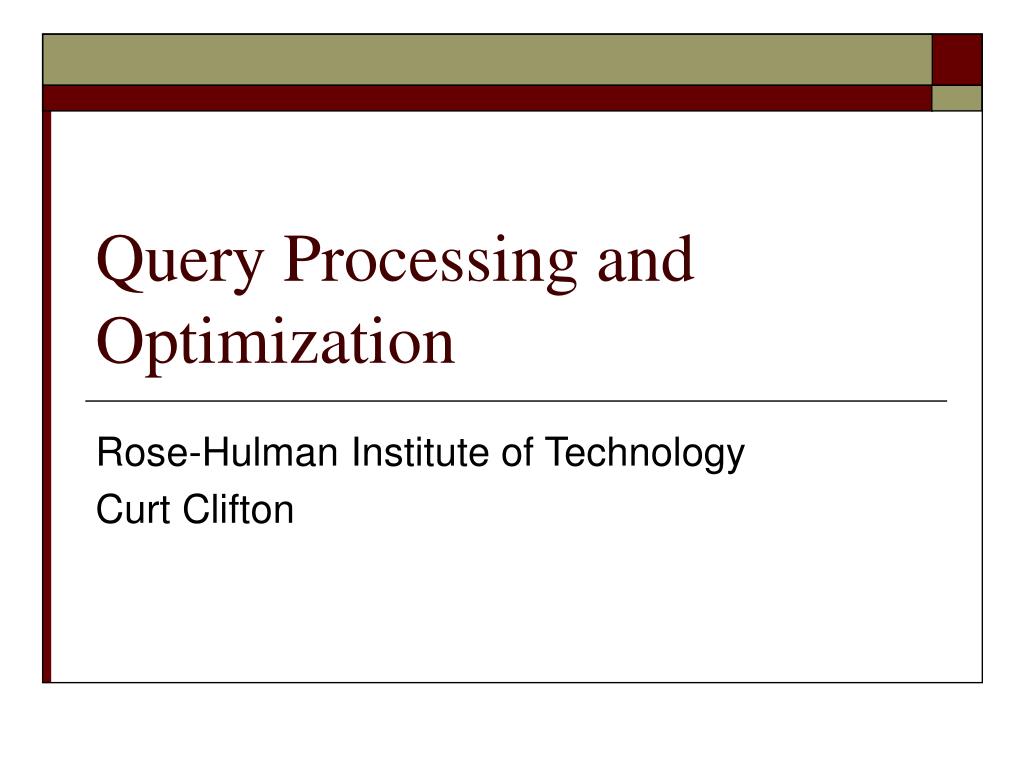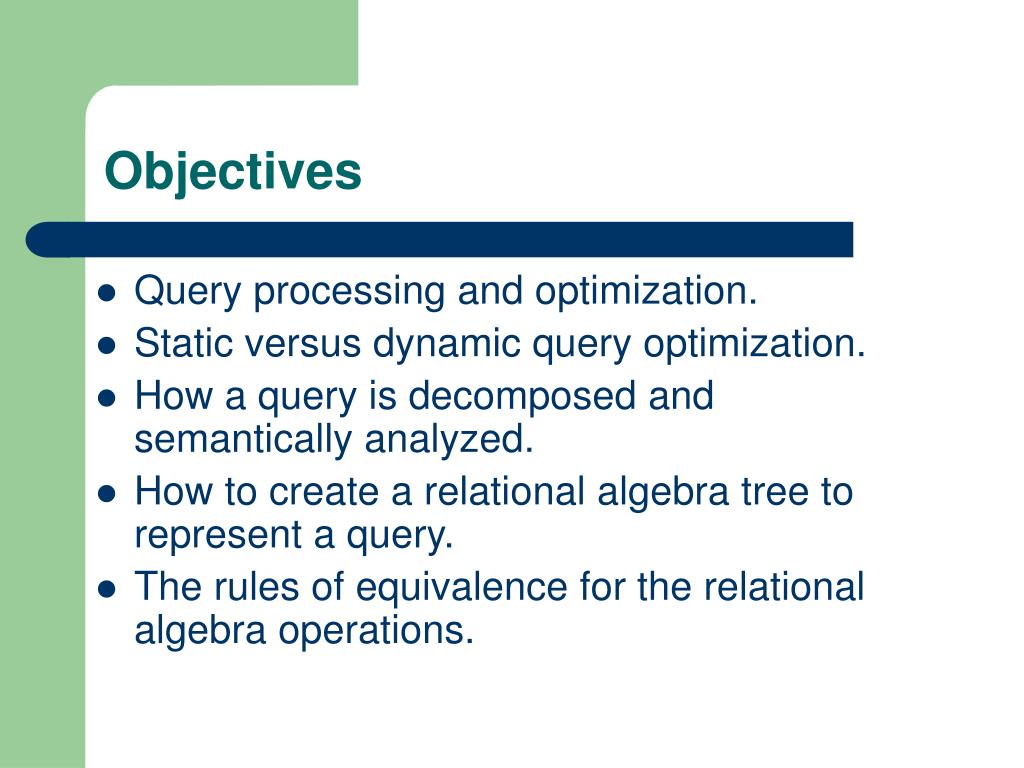

#Query optimization and query processing in dbms code
The SQL Server query optimizer first generates a set of feasible query plans for a query or batch of T-SQL code submitted by the database engine to query optimizer. Prior to SQL Server 2017, query processing was a uniform process with a certain set of steps. This improved query plan quality is Adaptive Query Processing. In SQL Server 2017, Microsoft went one step further and worked on improving the query plan quality.

You can read more about Query Store in Monitor Query Performance Using Query Store in SQL Server. Any point in time these plans can be reviewed, and the user can use plan forcing to enforce the query processor to select and use a specific query plan for execution. Query store is a feature to persist query execution plans and analyze the history of query plans to identify the queries that can cause performance bottlenecks. Query Store monitors query performance and provides methods to choose better query plans for execution. In SQL Server 2016, Microsoft introduced Query Store. Every so often, Microsoft includes new feature and functionality in SQL Server to improve query performance to help their users. Query performance is always a subject of research and innovation. This method is available in SQL Server (starting with SQL Server 2017 (14.x)) and Azure SQL Database. The expression power of Tuple Relation Calculus and Domain Relation Calculus is equivalent to Relational Algebra.Adaptive query processing is the latest, improved query processing feature introduced in the SQL Server database engine. Just like TRC, DRC can also be written using existential and universal quantifiers. Output − Yields Article, Page, and Subject from the relation TutorialsPoint, where subject is database. It performs binary union between two given relations and is defined as − r ∪ s = Selects and projects columns named as subject and author from the relation Books. Where A 1, A 2, A n are attribute names of relation r.ĭuplicate rows are automatically eliminated, as relation is a set. It projects column(s) that satisfy a given predicate. Output − Selects tuples from books where subject is 'database' and 'price' is 450 or those books published after 2010.

σ subject = "database" and price = "450" or year > "2010"(Books) Output − Selects tuples from books where subject is 'database' and 'price' is 450. σ subject = "database" and price = "450"(Books) Output − Selects tuples from books where subject is 'database'. These terms may use relational operators like − =, ≠, ≥, , ≤.įor example − σ subject = "database"(Books) p is prepositional logic formula which may use connectors like and, or, and not. Where σ stands for selection predicate and r stands for relation. It selects tuples that satisfy the given predicate from a relation. We will discuss all these operations in the following sections.

The fundamental operations of relational algebra are as follows − Relational algebra is performed recursively on a relation and intermediate results are also considered relations. They accept relations as their input and yield relations as their output. An operator can be either unary or binary. Relational algebra is a procedural query language, which takes instances of relations as input and yields instances of relations as output. There are two kinds of query languages − relational algebra and relational calculus. Relational database systems are expected to be equipped with a query language that can assist its users to query the database instances.


 0 kommentar(er)
0 kommentar(er)
